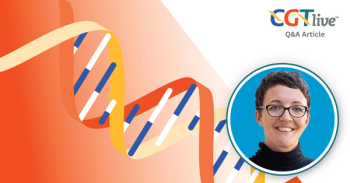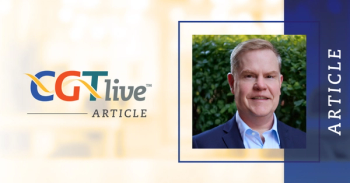
Lovo-Cel Efficacy Maintained at 60 Months for Preventing VOEs in SCD
Long-term data on lovo-cel gene therapy for sickle cell disease (SCD) reveals sustained efficacy at 60 months.
A one-time infusion of lovotibeglogene autotemcel (lovo-cel; Lyfgenia) resulted in complete resolution of vaso-occlusive events (VOE) and sustained levels of HbAT87Q for nearly all patients treated with sickle cell disease (SCD), according to long-term findings the phase 1/2 HGB-206 (NCT02140554) and phase 3 HGB-210 (NCT04293185) studies presented at the 2023 ASH Annual Meeting.
A globin response was seen for 86.8% of patients, with at least a 30% increase in non-transfused total hemoglobin. During the 6-to-18-month efficacy assessment period, 88.2% of patients achieved complete resolution of all VOEs (30 of 34; 95% CI, 72.5%-96.7%). Of adolescent patients (n = 10), 100% had a complete resolution of all VOEs with lovo-cel.
“This is a one-time truly transformative treatment with lovo-cel resulting in near complete resolution of VOEs and severe VOEs for all patients,” said lead investigator Julie Kanter, MD, Division of Hematology and Oncology, University of Alabama. “Biologic efficacy has been shown to be sustained up to 60 months with patients demonstrating stable therapeutic levels of hemoglobin AT87Q, increased levels of total hemoglobin, and normalization of all homolysis markers.”
The 2 studies enrolled 47 patients with SCD, with 36 patients analyzed from the HGB-206 trial in group C and 11 from the HGB-210 trial. Patients had a median of 3.5 annualized adjudicated VOEs at baseline. The median age of patients at enrollment was 23 years. Of those enrolled, 21.3% were under the age of 18 but over the age of 12 (n = 10). The majority of patients enrolled were males (59.6%). There were 6 patients in the study with a history of stroke, 4 with overt stroke and 2 with silent stroke.
After enrollment, patients received plerixafor to mobilize hematopoietic stem and progenitor cells (HSPC), which was followed by apheresis. For the therapy, HSPC are transduced with the BB305 lentiviral vector to encode a modified β-globin gene, which produces HbAT87Q that has a similar oxygen affinity to wild-type HbA plus anti-sickling properties. Before infusion, myeloablative conditioning was administered using busulfan. “Individuals with sickle cell disease are often taking hydroxyurea and that hydroxyurea is stopped and the individuals are started on a pre-transfusion regimen this is to allow their stem cells to be ready for mobilization,” added Kanter.
Following infusion, all patients had stable HbAT87Q levels from 6 months through the last follow up, which occurred at month 60. The HbAT87Q levels increased by 40% or more through the follow up period. Most assessable patients (n = 38) had a globin response (33 of 38; 86.8%). Of those assessed long-term, all had maintained a globin response at their last follow up (33 of 33). There were no strokes in those with a history of stroke following infusion of lovo-cel, which Kanter labeled a very important finding.
Overall, 94.1% experienced complete resolution of severe VOEs. All those who experienced a VOE post-infusion saw at least a 50% reduction in these events compared with baseline. Moreover, hospital admissions and hospital days also significantly declined from 2.5 to 0.41 and from 15.75 to 2.20, respectively. There were also clinically meaningful improvements seen in pain intensity, pain interference, and fatigue for many patients (57%, 64%, and 64%, respectively).
“Importantly, all individuals who experience any kind of acute painful event or vaso-occlusive event post treatment experienced a reduction of at least 50% compared with baseline and a reduction in hospital admissions,” Kanter said. “It’s very important to discuss patient reported outcomes because looking at these laboratory values, biologic outcomes, and by veno-occlusive events is important but what we really need to know is how our patients feel.”
Across both studies (N = 47), all patients experienced an adverse event (AE) of any grade. The rate of grade 3 or higher AEs was 93.6% across patients; however, most of these events were associated with the chemotherapy utilized prior to the infusion of the gene therapy, Kanter said. The AEs associated with lovo-cel were low, at 8.5%, and were mild in nature. There were 2 serious AEs, including 1 diagnosis of myelodysplastic syndrome (MDS). There were no cases of veno-occlusive liver disease, graft failure, or graft-versus-host disease. Additionally, no vector-mediated insertional oncogenesis or other vector-related complications were observed.
On December 8, the
“I think we're going to have a lot of opportunity to use both therapies. They haven't been studied in head-to-head comparisons, so I think that will be important long term as we make sure that these individuals get appropriate and timely follow up,” said Kanter. “I'll be honest, this is my personal opinion, I'm not speaking on behalf of bluebird bio, that I think the black boxed warning should have been in both therapies. We've seen multiple reasons now that these individuals may be at increased risk of leukemia or MDS at baseline and that there is a risk when you take out those cells and manufacture them, regardless of which therapy you're using.”
REFERENCE:
Kanter J, Thompson AA, Kwiatkowski JL, et al. Efficacy, Safety, and Health-Related Quality of Life (HRQOL) in Patients with Sickle Cell Disease (SCD) Who Have Received Lovotibeglogene Autotemcel (Lovo-cel) Gene Therapy: Up to 60 Months of Follow-up. Blood. 2023;142(suppl 1):1051.doi:10.1182/blood-2023-174229
Newsletter
Stay at the forefront of cutting-edge science with CGT—your direct line to expert insights, breakthrough data, and real-time coverage of the latest advancements in cell and gene therapy.

























